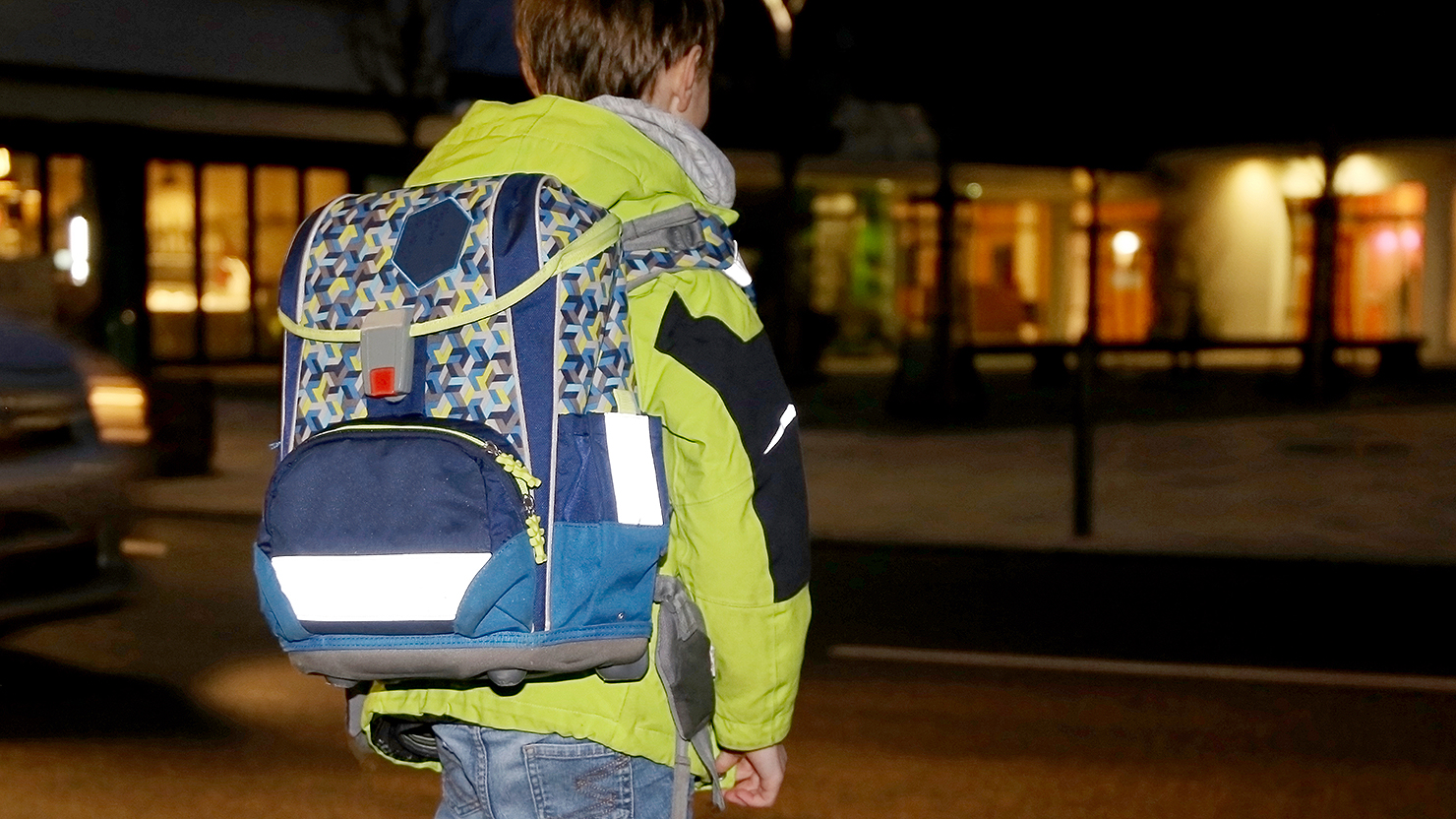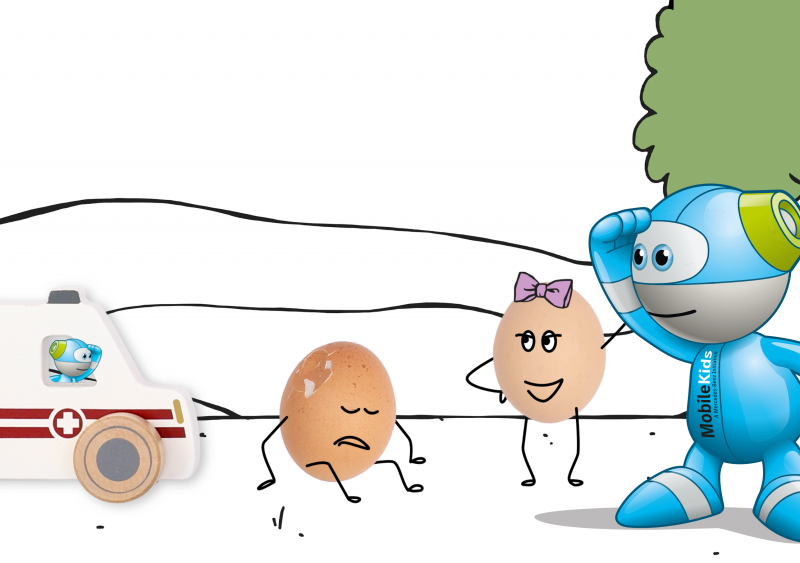While it's true that many kids like to have colourful clothes in their wardrobe, not all items of clothing help to make them visible in the dark. So what should you particularly look for when choosing their clothes?
Owing to their physical size and stage of development, children in road traffic have to rely on being easily and quickly visible to other road users. Especially in rainy and foggy conditions, and in the dark, it is therefore important to choose the right clothing and attach reflectors to it.
Children are often not aware that if they wear dark clothing, they run a particularly high risk of being overlooked by car drivers. Moreover, they are often unaware that visibility conditions can be very different for drivers and pedestrians. In the dark and in poor weather conditions, for example, a driver is often only able to recognise people when the headlights actually light them up.
MobileKids therefore wants to make children more aware of the lifesaving difference it makes whether they wear dark or easily visible clothing in road traffic.
Five tips in the dark
Whether in rainy or foggy weather, or at darker times of the day or season, it is important to be all the more careful in road traffic when the lighting conditions are poor. You can find out here how pedestrians should behave in these cases, and what your child must be sure to remember.
1. Clearly visible at any price
We know that this is a well-known piece of advice, but it always bears repeating: Make sure that your child's clothing is easily visible. This means wearing light colours, as well as attaching reflective strips to anoraks, jackets or school bags. It's also a good idea if you and your child wear a reflective safety vest.
2. Be aware of the surroundings
To make sure that your child behaves safely in road traffic, you should explain the reasons why in advance. It's important for your child to understand that they are easily overlooked if wearing dark clothing, and that light clothing achieves the opposite. We recommend that you try an experiment to make sure that your child chooses reflective clothing items: create a "darkroom" together, and demonstrate the visibility of different items of clothing.
3. The way is the goal
The following tip is not only important in the dark, and should be especially remembered when visibility is poor. Ask yourself these questions: What route does my child usually take? Is the street lighting adequate? Is there a safer route, though it might involve a detour? Our SafetyMap can help you to identify the perfect route. You can use it to find the safest way from A to B. We also recommend that you walk the planned route with your child at the relevant time of day.
4. Attention cyclists
Of course poor visibility does not mean that you or your child should leave the bicycle at home. However, it is essential that you check whether everything is roadworthy and safe. This means that you should regularly check the bicycle's lights and reflectors, and whether the gear and brake fittings are in good condition. Incidentally, in some regions local police stations offer bicycle check-ups in schools to ensure roadworthiness and safety in road traffic.
5. Togetherness for more traffic safety
Last not least: Nobody is on the streets alone! Our roads will be safest if we all look out for each other. And for children, it's best if they walk in groups of two or more, because four eyes can see more than two.



